The best Chinese Android smartphones in 2025
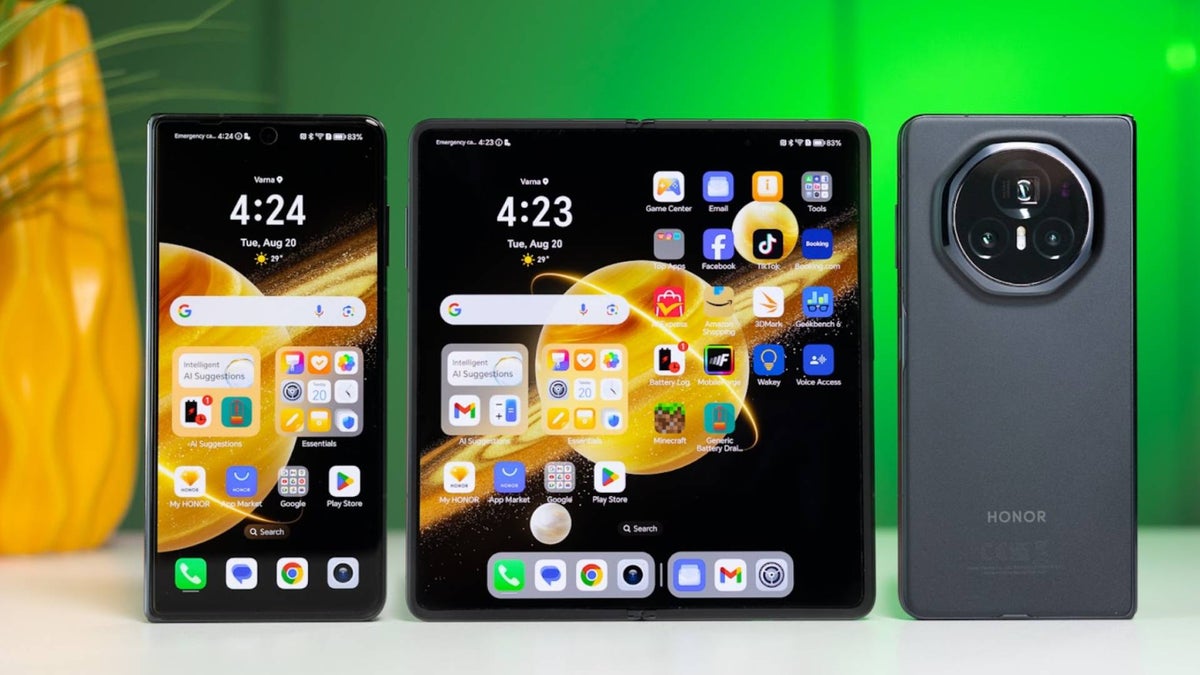
Smartphones from the Far East – from China, to be specific – are not just an exotic alternative to the Apple-Samsung-Google triumvirate.
Instead, Chinese smartphones stand out on their own – and in many cases, they lead the way, setting trends that the bigger, more familiar brands should follow. That is, if their CEOs are willing to take a risk instead of sticking with well-known hardware.
Chinese phones are among the best, most affordable and oddly creative Android phones on the market right now – and have been for years now.
There are brands such as OnePlus, Xiaomi, Redmi, Honor, Oppo and, of course, Huawei: I'm sure that you can find something that suits your needs (and then some), regardless whether you're after a phone with a humongous 8,000 mAh capacity battery, or a quar-camera setup.
All of the above can be summarized like that: considering getting a Chinese phone in 2025 isn't just understandable: it's kind of unavoidable, given the tech landscape.
What are the best Chinese phones in 2025?
Flagships:
- OnePlus 13 – the successor to the best OnePlus phone ever made (that's the OnePlus 12) is here with a 6,000 mAh capacity battery. And so much more!
- OnePlus 13T – fancy a compact flagship with a huge 6,260 mAh battery? This one is for you (it's also known as the OnePlus 13s).
- Honor Magic 7 Pro – powerful and high-end, this device features a third-generation silicon-carbon battery and an impressive camera to match.
- Xiaomi 15 Pro – a 6,100 mAh battery, triple 50MP cameras, and Snapdragon 8 Elite performance – what more could you ask for?
- Oppo Find X8 Ultra – four cameras on its back, because reasons. Two of the four are periscopes. Plus, the phone packs lots of AI tricks.
- Huawei Mate 70 Pro – technically, this shouldn't even be in this list. After all, it doesn't support any Android apps. But... we can't ignore Huawei.
- Vivo X200 Pro – those who are after the 3nm chipset experience should be happy to toy around with the Dimensity 9400 and its "All Big Core" design.
Foldables:
- Oppo Find N5 – "The foldable king is back!" is all we could say upon reviewing this beast.
- Honor Magic V3 – thin as a pancake, powerful as a space rocket. Don't let the exteriors fool you!
- Vivo X Fold 3 Pro – what's large yet sleek, lightweight yet equipped with top-tier cameras? Correct, it's this amazing foldable!
- Huawei Mate XT – the world's first tri-folding monster. Expensive, limited, exotic: it's straight out of sci-fi!
- Xiaomi Mix Fold 4 – another foldable contender: 7.98-inch AMOLED display when unfolded and 6.56-inch display when closed.
We've got "Pro" flagships, we've got "vanilla" flagships, we've got the new, popular foldable flavor. We've got it all!
OnePlus 13
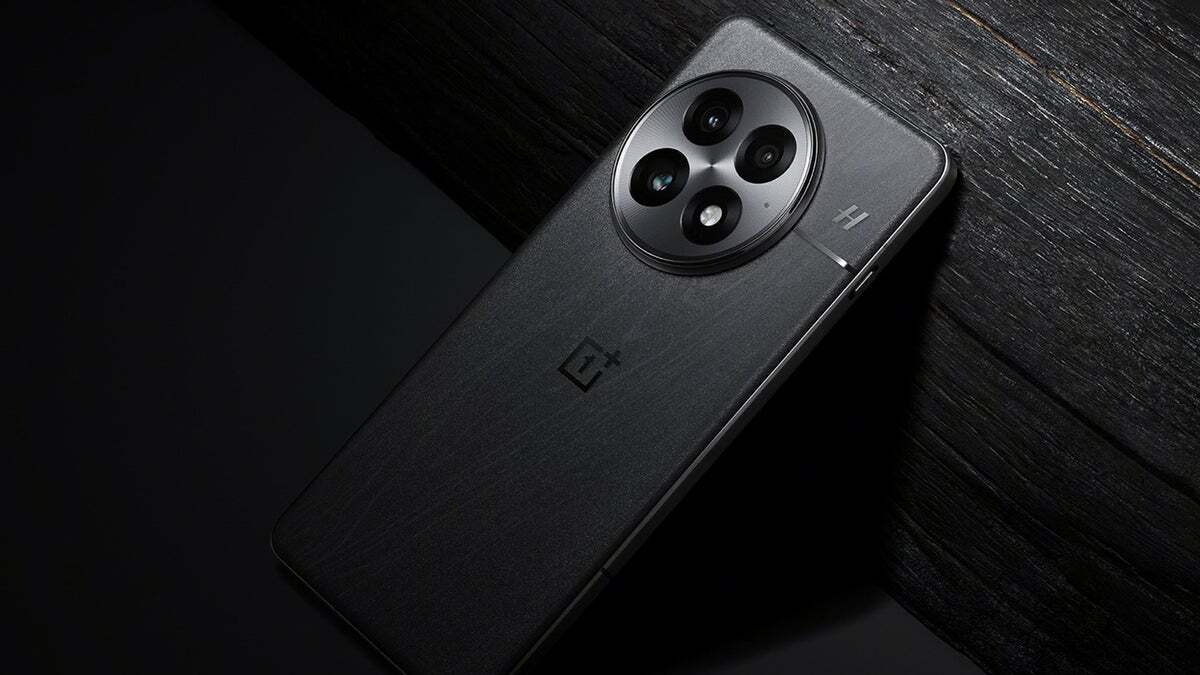
Image credit – OnePlus
The OnePlus 13 is here to make us believe that two exceptional flagships in a row is not an impossible task to pull off for any phone maker out there. The successor to the stunning OnePlus 12 is here with a new design: flat sides and a thinner body.
The device boasts an IP69 certification, surpassing the standard IP68, with enhanced protection against powerful water jets and immersion, ensuring greater durability and peace of mind.
The 6.8-inch OLED screen comes with improved eye protection features, which is always a welcomed upgrade. The display (QHD+ resolution, HDR+ support) has a 1-120Hz local high refresh rate. This technology allows various parts of a display to refresh at different rates, unlike traditional screens that refresh the entire display uniformly.
Under the hood, users will be enchanted to find the Snapdragon 8 Elite chipset – the best Qualcomm you could get on a phone. Also, there's the option for 24 GB of RAM. Amazing!
Personally, if I had to choose between the OnePlus 13 and OnePlus 12, I'd go for the newer model simply because it packs a large 6,000mAh silicon-carbon battery (versus the 5,400 mAh that the previous model offers).
The device boasts an IP69 certification, surpassing the standard IP68, with enhanced protection against powerful water jets and immersion, ensuring greater durability and peace of mind.
The 6.8-inch OLED screen comes with improved eye protection features, which is always a welcomed upgrade. The display (QHD+ resolution, HDR+ support) has a 1-120Hz local high refresh rate. This technology allows various parts of a display to refresh at different rates, unlike traditional screens that refresh the entire display uniformly.
Under the hood, users will be enchanted to find the Snapdragon 8 Elite chipset – the best Qualcomm you could get on a phone. Also, there's the option for 24 GB of RAM. Amazing!
Personally, if I had to choose between the OnePlus 13 and OnePlus 12, I'd go for the newer model simply because it packs a large 6,000mAh silicon-carbon battery (versus the 5,400 mAh that the previous model offers).
OnePlus 13T a.k.a. OnePlus 13s
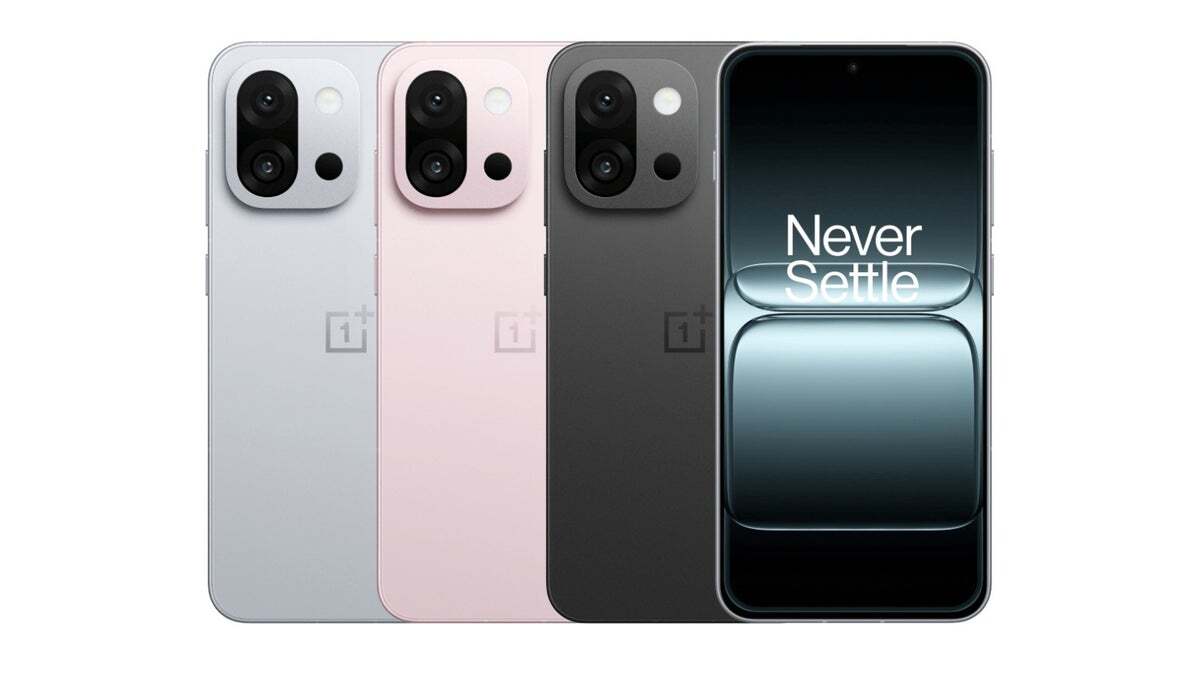
Image credit – OnePlus
This is a compact smartphone that packs some serious heat under the hood.
It features a 6.32-inch LTPO AMOLED display with crisp 1.5K resolution and 120Hz refresh rate, powered by the Snapdragon 8 Elite chip – the same one found in the Galaxy S25 series (including the new Galaxy Ultra model).
The OnePlus 13T (or 13s) comes in 256 GB to 1 TB storage variants, paired with up to 16 GB of RAM. The camera setup includes two 50MP rear sensors (main and 2x telephoto), and a 16MP front cam.
The crown? A massive 6,260 mAh battery packed into a slim 8.15mm frame – something even larger phones can't pull off. At 185g, it's lighter than expected too, despite its power. While it may not match the OnePlus 13 in camera versatility, the 13T brings serious value, especially if priced competitively. With Android 15, Wi-Fi 7, IP65 protection, and blazing 80W charging, this could be the sleeper hit of the compact phone market.
The crown? A massive 6,260 mAh battery packed into a slim 8.15mm frame – something even larger phones can't pull off. At 185g, it's lighter than expected too, despite its power. While it may not match the OnePlus 13 in camera versatility, the 13T brings serious value, especially if priced competitively. With Android 15, Wi-Fi 7, IP65 protection, and blazing 80W charging, this could be the sleeper hit of the compact phone market.
Honor Magic 7 Pro
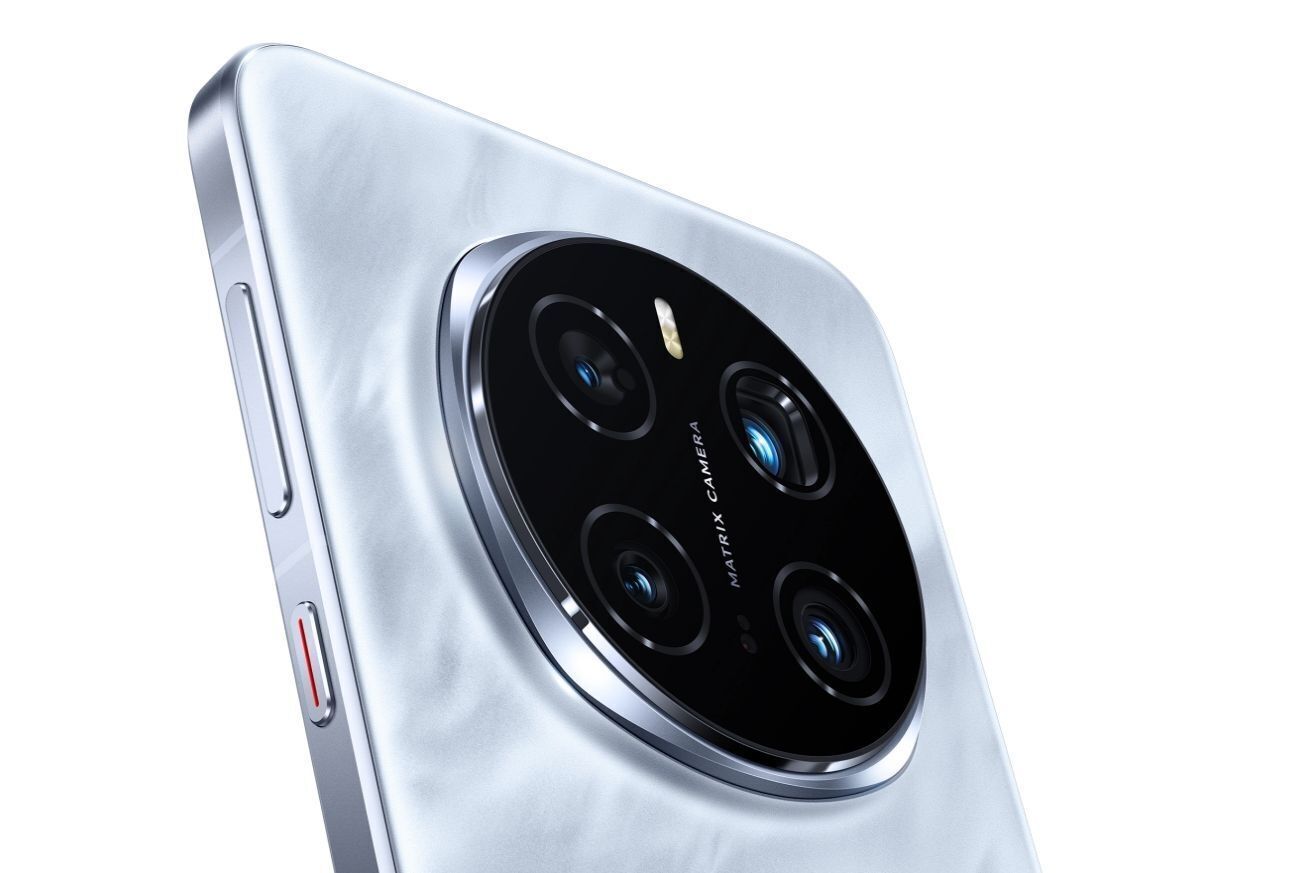
Image credit – Honor
This one – the Honor Magic 7 Pro, I mean – is a pretty easy pick. Just like the Honor Magic 6 Pro, the seventh Magic iteration looks premium, acts premium and… it's sold for a premium price.
The Honor Magic 7 Pro features a 300 MP triple-camera setup, including a 50 MP main sensor, a 50 MP ultrawide lens, and a 200 MP telephoto sensor, likely the Samsung S5KHP9. Enhanced by Honor's Image Engine 3.0, the system promises advanced portrait refinement, light and shadow optimization, and high-quality telephoto performance, with the potential for exceptional hybrid zoom.
The display comes with some pretty solid specs: it's a 6.8-inch OLED LTPO panel with a dynamic refresh rate up to 120 Hz, FHD+ resolution, and 5000 nits peak brightness.
What's even more impressive is that the Honor Magic 7 Pro packs a 5,850 mAh battery with third-generation silicon-carbon technology. It supports impressive 100W wired and 80W wireless charging. Once you step in the 100W charging speed territory, you can't go back. It's addictive.
The Honor Magic 7 Pro features a 300 MP triple-camera setup, including a 50 MP main sensor, a 50 MP ultrawide lens, and a 200 MP telephoto sensor, likely the Samsung S5KHP9. Enhanced by Honor's Image Engine 3.0, the system promises advanced portrait refinement, light and shadow optimization, and high-quality telephoto performance, with the potential for exceptional hybrid zoom.
The display comes with some pretty solid specs: it's a 6.8-inch OLED LTPO panel with a dynamic refresh rate up to 120 Hz, FHD+ resolution, and 5000 nits peak brightness.
What's even more impressive is that the Honor Magic 7 Pro packs a 5,850 mAh battery with third-generation silicon-carbon technology. It supports impressive 100W wired and 80W wireless charging. Once you step in the 100W charging speed territory, you can't go back. It's addictive.
Also, the Honor Magic 7 Pro stands out with advanced biometric features. It includes sophisticated 3D facial scanning technology, akin to what Apple offers with the iPhone, and incorporates an ultrasonic fingerprint scanner beneath the display, similar to the latest Samsung Galaxy devices.
Xiaomi 15 Pro
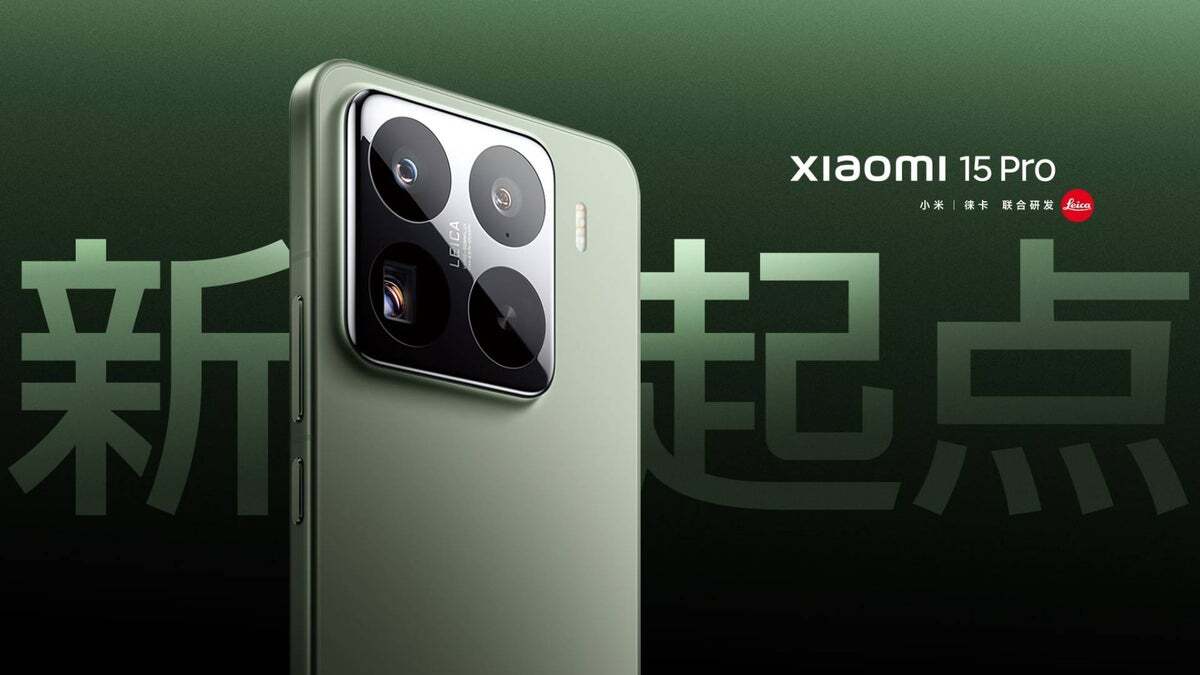
Image credit – Xiaomi
It's not until (early) 2025 that the Xiaomi 15 Pro will be globally available, but we cannot not include it in this list of ours. With its 6,100 mAh capacity cell, the Xiaomi 15 Pro offers even better battery numbers than the aforementioned OnePlus 13 (6,000 mAh).
Under the flagship hood, it's the flagship Snapdragon 8 Elite chipset. On the back, there's a triple 50MP camera system and personally, I'm delighted to see that the Xiaomi 15 Pro offers an ultrasonic under-display fingerprint scanner, instead of the optical one of its predecessor.
Under the flagship hood, it's the flagship Snapdragon 8 Elite chipset. On the back, there's a triple 50MP camera system and personally, I'm delighted to see that the Xiaomi 15 Pro offers an ultrasonic under-display fingerprint scanner, instead of the optical one of its predecessor.
Users who decide to go for the "vanilla" Xiaomi 15 – the non-Pro model, won't be disappointed. Sure, it's a smaller display, and a smaller battery that you're getting, but it's still the Snapdragon 8 Elite that powers the Xiaomi 15.
Of course, if you want the ultimate Xiaomi experience, you should wait for the Xiaomi 15 Ultra, but this beast is not expected until 2025. If you're that impatient, you can always go for the Xiaomi 14 Ultra – it's still fresh!
Oppo Find X8 Ultra

Image credit – Oppo
The Oppo Find X8 Ultra is a photography-first flagship loaded with power and polish. It sports a large, flat 6.82-inch AMOLED display with smooth 1–120Hz refresh rate and ultra-fine resolution. Under the hood, you get a Snapdragon 8 Elite chip, up to 16 GB RAM, 1 TB of fast UFS 4.1 storage, and a 6,100 mAh battery with blazing 100W wired and 50W wireless charging.
But the real spotlight is on the camera system: five rear shooters (0.6x, 1x, 3x, and 6x plus a multispectral system unit), headlined by the powerful 1-inch Sony LYT-900 sensor, now paired with an upgraded 8-element lens to sharpen images and reduce color fringing. The ultra-wide lens delivers 50MP detail with autofocus, while the 3x periscope telephoto lens gets a new Sony sensor and an f/2.1 aperture, designed to cut glare and boost clarity. It also doubles as a telemacro lens, perfect for capturing intricate close-ups from a distance. Thin at 8.78mm and packed with handy extras like an IR blaster and shortcut buttons, the Find X8 Ultra is both sleek and seriously capable.
But the real spotlight is on the camera system: five rear shooters (0.6x, 1x, 3x, and 6x plus a multispectral system unit), headlined by the powerful 1-inch Sony LYT-900 sensor, now paired with an upgraded 8-element lens to sharpen images and reduce color fringing. The ultra-wide lens delivers 50MP detail with autofocus, while the 3x periscope telephoto lens gets a new Sony sensor and an f/2.1 aperture, designed to cut glare and boost clarity. It also doubles as a telemacro lens, perfect for capturing intricate close-ups from a distance. Thin at 8.78mm and packed with handy extras like an IR blaster and shortcut buttons, the Find X8 Ultra is both sleek and seriously capable.
Other buying guide:
Huawei Mate 70 Pro
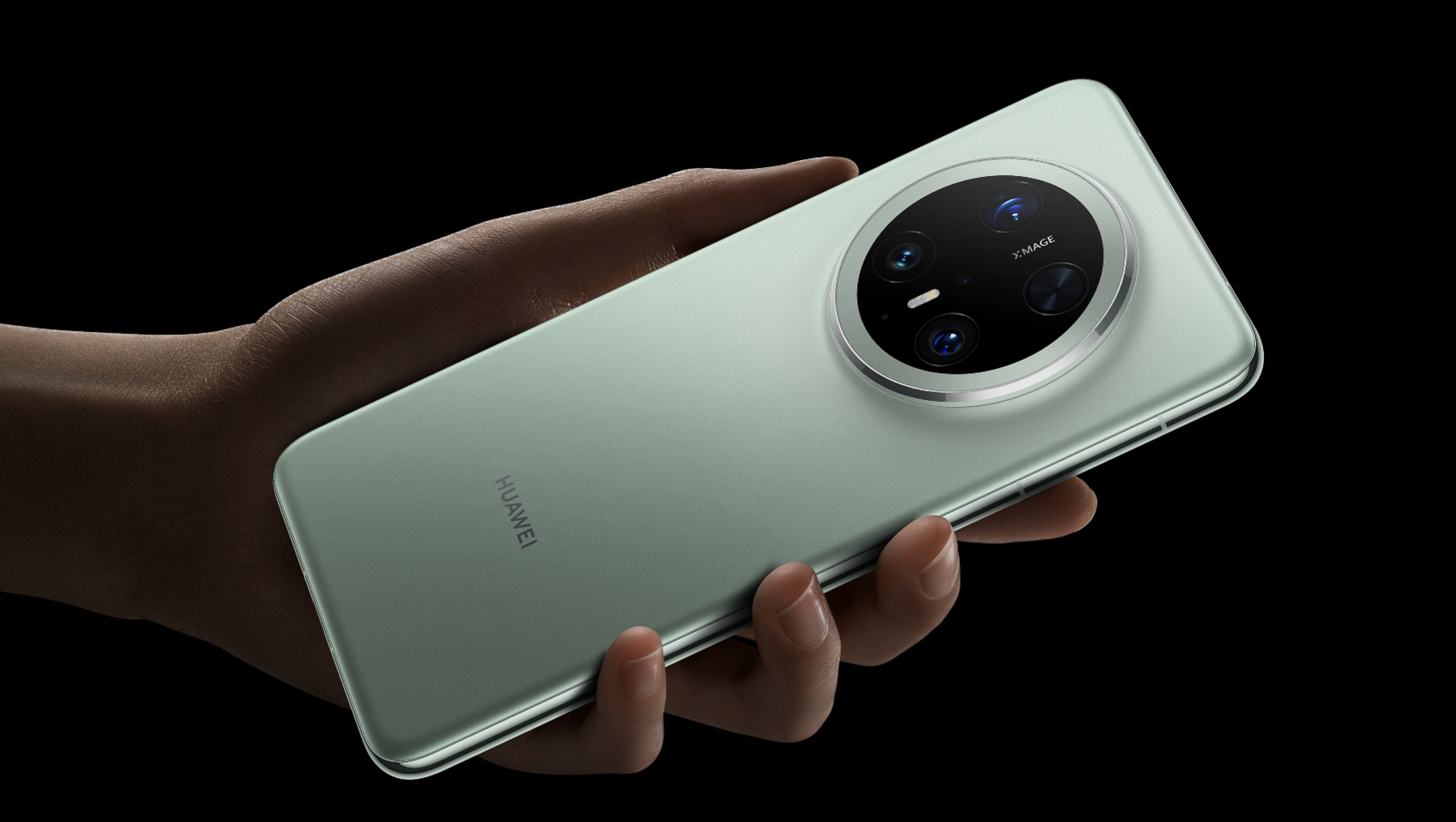
Huawei Mate 70 Pro in Spruce Green. | Image Credit – Vmall
Huawei is at it again and simply refuses to wither away; instead of fulfilling the dream of so many US officials, the notoriously sanctioned brand released the Huawei Mate 70 series, consisting of the Mate 70, Mate 70 Pro, Mate 70 Pro+, and Mate 70 RS.
These phones mark the beginning of Huawei's new journey – a journey that does not include support for Android apps. That's right, the Huawei Mate 70 series does not support Android apps and it's kind of ironic that we're including it in this current list.
However, there's a workaround way to run Android apps for the moment. The new Mate 70 lineup comes with HarmonyOS 4.3 out of the box. That's a dual-framework OS, meaning that it can run both standard Android apps and HarmonyOS NEXT's apps.
The upcoming software update will bring HarmonyOS NEXT to the Mate 70. This is Huawei's own operating system, which doesn't support anything Android.
Apart from that, with the Pro models, you're getting an interesting camera setup. It packs a variable aperture (f/1.4 – f/4.0) for the 50MP main camera, a 48MP telephoto lens with 4x optical zoom, and a 40MP ultrawide camera. The Pro+ uses RYYB sensors, compared to the Pro's RGGB sensors.
The RYYB sensor replaces green pixels with yellow ones, allowing both red and green light to pass through, which enhances low-light performance, improves color fidelity, and produces more natural skin tones.
Both models include an XMage spectral imaging sensor for advanced color accuracy using 1.5 million spectral channels.
These phones mark the beginning of Huawei's new journey – a journey that does not include support for Android apps. That's right, the Huawei Mate 70 series does not support Android apps and it's kind of ironic that we're including it in this current list.
However, there's a workaround way to run Android apps for the moment. The new Mate 70 lineup comes with HarmonyOS 4.3 out of the box. That's a dual-framework OS, meaning that it can run both standard Android apps and HarmonyOS NEXT's apps.
The upcoming software update will bring HarmonyOS NEXT to the Mate 70. This is Huawei's own operating system, which doesn't support anything Android.
Apart from that, with the Pro models, you're getting an interesting camera setup. It packs a variable aperture (f/1.4 – f/4.0) for the 50MP main camera, a 48MP telephoto lens with 4x optical zoom, and a 40MP ultrawide camera. The Pro+ uses RYYB sensors, compared to the Pro's RGGB sensors.
The RYYB sensor replaces green pixels with yellow ones, allowing both red and green light to pass through, which enhances low-light performance, improves color fidelity, and produces more natural skin tones.
Vivo X200 Pro
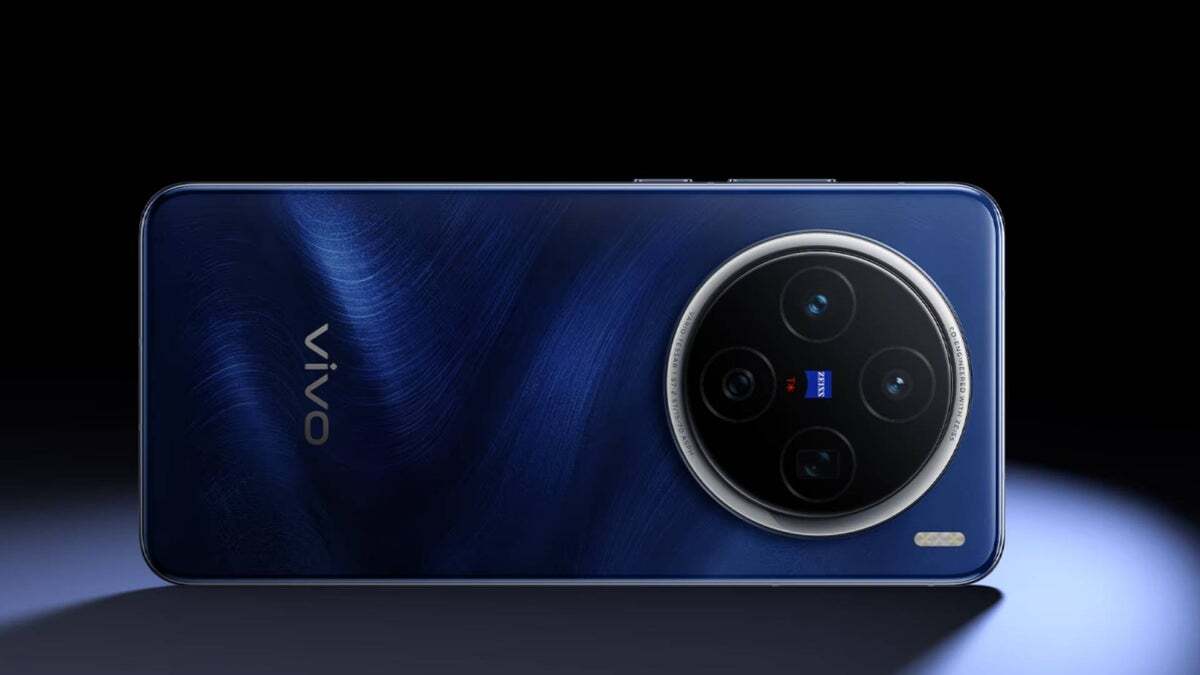
Image credit – Vivo
The best you can get from Vivo's new X200 line is the Vivo X200 Pro: unless you fancy smaller phones. Then, the best handset to get is the Vivo X200 Pro mini. That's right, Vivo is one of the brands that are finally accepting and acting on the reality that not everybody out there wants a tablet-sized phone.
Of course, it's not yet 100% certain that the Vivo X200 will be released globally, but even if it stays in China, there are ways to get it shipped to (almost) any part of the world.
There isn't a shortage of reasons to walk the extra mile – your efforts would pay off in the form of impressive goods.
The Vivo X200 Pro comes with a large 6.8-inch AMOLED display with a high resolution of 2800 x 1260 pixels, 120Hz refresh rate, and impressive brightness. Powered by the advanced Dimensity 9400 chipset with an octa-core processor, you're about to forget what "lag" means.
The phone boasts a triple Zeiss-branded camera system, including a 50MP main camera with optical image stabilization, a remarkable 200MP telephoto lens with 3x optical zoom, and a 50MP ultrawide camera. Vivo's phones are known for their photography capabilities, so you can be sure the pics you'll take are going to be punchy and detailed.
Battery-wise, the X200 Pro comes with a substantial 6,000 mAh cell. It supports fast charging with 90W wired and 30W wireless charging capabilities, and also offers reverse charging.
Of course, it's not yet 100% certain that the Vivo X200 will be released globally, but even if it stays in China, there are ways to get it shipped to (almost) any part of the world.
There isn't a shortage of reasons to walk the extra mile – your efforts would pay off in the form of impressive goods.
The Vivo X200 Pro comes with a large 6.8-inch AMOLED display with a high resolution of 2800 x 1260 pixels, 120Hz refresh rate, and impressive brightness. Powered by the advanced Dimensity 9400 chipset with an octa-core processor, you're about to forget what "lag" means.
The phone boasts a triple Zeiss-branded camera system, including a 50MP main camera with optical image stabilization, a remarkable 200MP telephoto lens with 3x optical zoom, and a 50MP ultrawide camera. Vivo's phones are known for their photography capabilities, so you can be sure the pics you'll take are going to be punchy and detailed.
Oppo Find N5
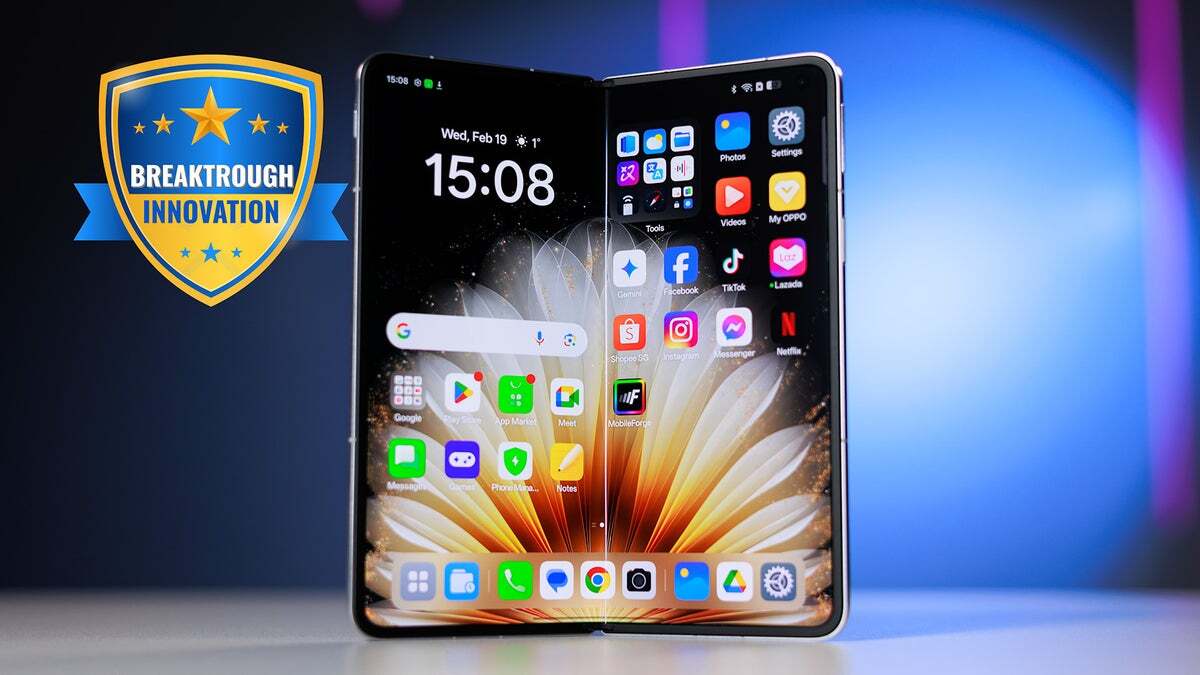
Image credit – PhoneArena
If you're into foldables, the Oppo Find N5 is an easy yes. The device combines sleek design with next-level engineering – it's larger, yet slimmer and lighter than before, and impressively durable. A stylish powerhouse that truly feels like a leap forward.
The Oppo Find N5 packs power and polish. It features a 6.6-inch 120Hz AMOLED cover screen and a spacious 8.1-inch 120Hz inner display, both offering sharp resolutions. Inside, it runs on the Snapdragon 8 Elite chip with a 3.53 GHz Oryon V2 CPU setup and Adreno 830 GPU, backed by 16 GB of RAM and Android 15-based ColorOS 15. The camera setup includes a 50MP main sensor, 50MP 3x telephoto, and 8MP ultra-wide, while a 5,600 mAh battery supports 88W wired and 50W wireless charging. At around $1,870, it's a heavyweight at 229g, but delivers top-tier performance and features in a sleek foldable form.
Honor Magic V3

Image credit – PhoneArena
Okay, time to wheel out the foldables to the stage!
Our first foldable pick is the Honor Magic V3 – thin as a pancake, but powerful as a space rocket! Well, almost. Certainly, it's sleek, advanced, and flashy enough to be compared with a space rocket.
When it was released, we were stunned by Honor's claims that it's the thinnest foldable on the market, with its 4.35mm when unfolded (for reference, the Galaxy Z Fold 6 measures 5.6mm unfolded). But that's correct – it's thinner than any other handset that you can think of. Except for a certain Huawei alien tri-foldable, but we'll discuss that in a moment.
The phone is built with advanced materials, including Special Fiber (resembling fiberglass, Kevlar, and carbon fiber), Super Steel for a hinge rated to endure 500,000 folds (I mean, come on!), a Super Armored Inner Screen with a nanoscale coating for 500% improved scratch resistance, and a NanoCrystal Shield protecting the cover screen.
Despite being thin, the Honor Magic V3 is equipped with a triple rear camera system, including a 50MP main camera with a Sony IMX906 stacked sensor (bright, large f/1.6 aperture), a 40MP ultrawide camera, and a 50MP periscope telephoto camera (3.5x optical zoom). It also features two 20MP front-facing cameras, one on the cover screen and another on the main screen, both with f/2.2 apertures.
So: the Honor Magic V3 features third-generation silicon-carbon battery technology, enabling a large 5,150 mAh cell in an impressively thin design. Despite its slim profile, the phone packs a flagship processor, a periscope zoom camera, and a dual-battery configuration to achieve this capacity. Is there anything else you'd like to see here?
Vivo X Fold 3 Pro
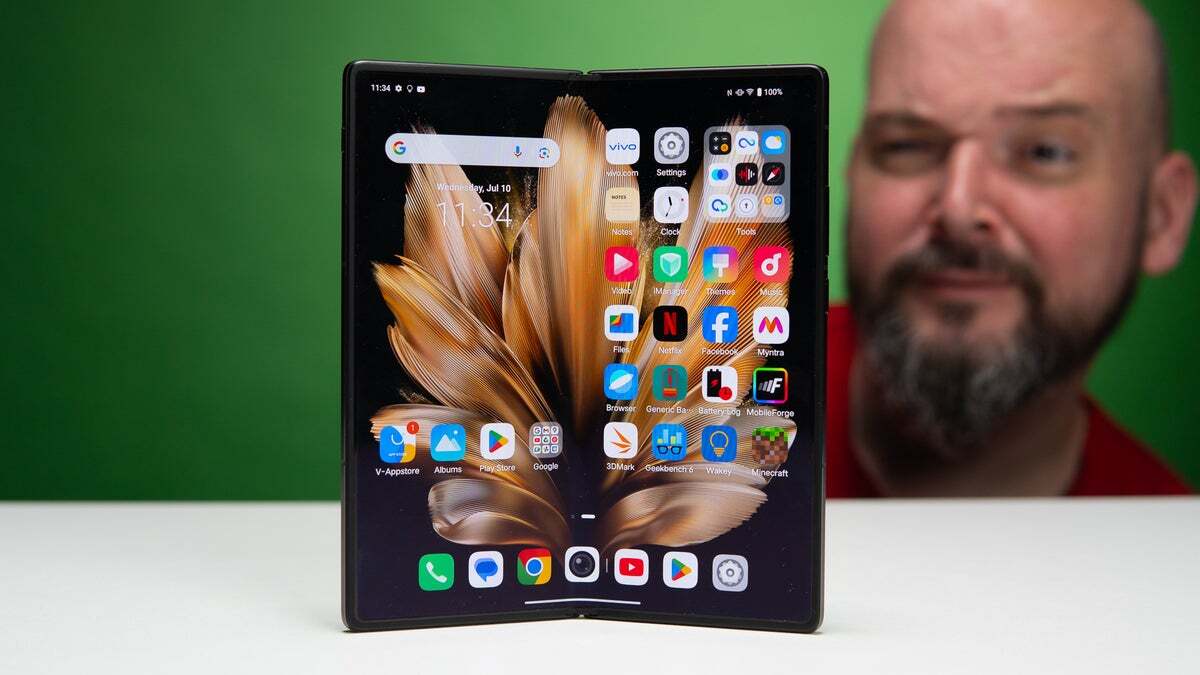
Image credit – PhoneArena
I can recommend the OnePlus Open to anyone looking for a foldable in a heartbeat not just in 2024, but in 2025 as well… despite the fact that the OnePlus Open is from 2023. Or, it's precisely why I would recommend it – 2023 phones will be way cheaper in 2025.
However, contenders are on the horizon – or, better yet – well above the horizon. I'm talking about the Vivo X Fold 3 Pro.
When unfolded, the device transforms into a thin 5.2mm slate with an almost square aspect ratio. Its 6-inch internal screen supports multitasking with software enhancements for floating apps and slide-in options. The hinge motion is smooth and stable, and while there's a crease across the screen's center, it is shallow and barely noticeable during use.
It's worth noting that the Vivo X Fold 3 Pro features two ultrasonic fingerprint scanners, one under the cover screen and the other under the main screen. Cool stuff.
At our disposal, we have a 50MP main camera, 50MP ultrawide, and a 64MP telephoto camera for detailed portraits, all enhanced by Zeiss-branded lenses and software optimizations.
The Snapdragon 8 Gen 3 chipset will make you forget about changing your phone because "it's slow" in the near future.
However, contenders are on the horizon – or, better yet – well above the horizon. I'm talking about the Vivo X Fold 3 Pro.
It's worth noting that the Vivo X Fold 3 Pro features two ultrasonic fingerprint scanners, one under the cover screen and the other under the main screen. Cool stuff.
At our disposal, we have a 50MP main camera, 50MP ultrawide, and a 64MP telephoto camera for detailed portraits, all enhanced by Zeiss-branded lenses and software optimizations.
The Snapdragon 8 Gen 3 chipset will make you forget about changing your phone because "it's slow" in the near future.
Huawei Mate XT
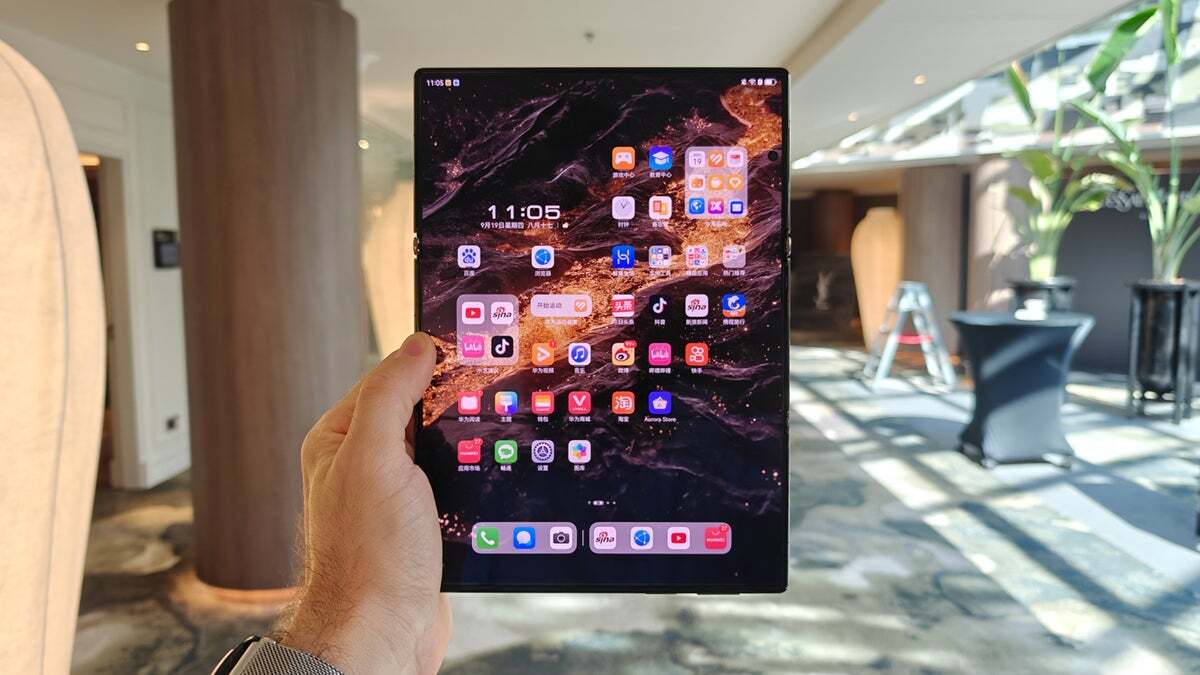
Image credit – PhoneArena
Yup. That's a phone you're looking at. I'm sure this is bigger than your grandfather's TV set from back in the day, but… it is what it is.
We've come a long way since and the Huawei Mate XT, the world's first tri-fold phone, is the proof.
This beast is thinner than the Honor Magic V3 (and its 4.35mm): the tri-folding Mate XT leaves everyone and everything else behind with its incredible 3.6mm thinness!
The Huawei Mate XT is thicker and heavier than a regular smartphone but is comparable in size to other foldables like the Galaxy Fold 6 and OnePlus Open, weighing just under 300 grams. When unfolded, it transforms into a surprisingly light 10.2-inch tablet, thanks to its tri-fold mechanism, which expands from a 6.4-inch smartphone to a tablet with a 16:11 aspect ratio.
The Huawei Mate XT is powered by the Kirin 9010 processor, built on the older 7nm process. While not as advanced as newer chips like the Apple A17 Pro or Snapdragon 8 Gen 3, it performs smoothly for general tasks, productivity, and even gaming.
The device runs on HarmonyOS in China and EMUI internationally, both offering a refined interface.
Its price is extravagant, though: it starts at $2,800… and has no limit. I mean, there were reports that (due to shortages) it was resold for over $20,000
We've come a long way since and the Huawei Mate XT, the world's first tri-fold phone, is the proof.
This beast is thinner than the Honor Magic V3 (and its 4.35mm): the tri-folding Mate XT leaves everyone and everything else behind with its incredible 3.6mm thinness!
The Huawei Mate XT is thicker and heavier than a regular smartphone but is comparable in size to other foldables like the Galaxy Fold 6 and OnePlus Open, weighing just under 300 grams. When unfolded, it transforms into a surprisingly light 10.2-inch tablet, thanks to its tri-fold mechanism, which expands from a 6.4-inch smartphone to a tablet with a 16:11 aspect ratio.
The device runs on HarmonyOS in China and EMUI internationally, both offering a refined interface.
Its price is extravagant, though: it starts at $2,800… and has no limit. I mean, there were reports that (due to shortages) it was resold for over $20,000
Xiaomi Mix Fold 4
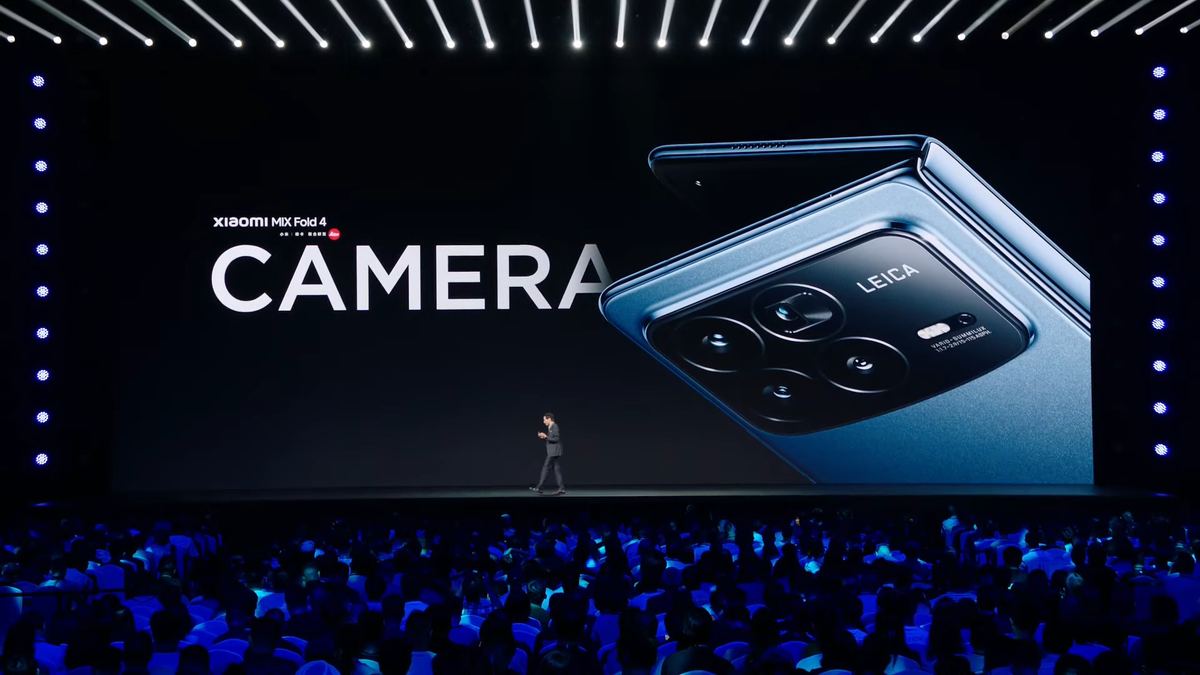
Image credit – Xiaomi
Finally, here's Xiaomi's Mix Fold 4 that was announced in the middle of the Summer 2024.
The Xiaomi Mi Mix Fold 4 features an impressive 8.0-inch AMOLED foldable display with a 2488 x 2224 resolution, 120Hz refresh rate and 3000 nits peak brightness.
Of course, the device is powered by the Qualcomm Snapdragon 8 Gen 3 chipset, paired with 12 GB of RAM and 256 GB of fast UFS 4.0 internal storage, which translates to a smooth performance. It runs on Android 14 (but that's changing, and Android 15 is landing across Xiaomi devices) and supports fast charging with a 5,100 mAh battery, offering 67W wired and 50W wireless charging.
The rear quad-camera system includes a 50MP main camera with optical image stabilization (OIS), a 50MP telephoto lens with 2x optical zoom, a 10MP periscope telephoto camera with 5x optical zoom, and a 12MP ultrawide camera.
Being so thin and crammed inside, foldables are somewhat prone to heating up. That's why the Mix Fold 4 stands out with its advanced vapor chamber technology to quickly dissipate heat. The heat is evenly spread across multiple layers of graphite, effectively preventing any buildup of excess heat.
The Xiaomi Mi Mix Fold 4 features an impressive 8.0-inch AMOLED foldable display with a 2488 x 2224 resolution, 120Hz refresh rate and 3000 nits peak brightness.
Of course, the device is powered by the Qualcomm Snapdragon 8 Gen 3 chipset, paired with 12 GB of RAM and 256 GB of fast UFS 4.0 internal storage, which translates to a smooth performance. It runs on Android 14 (but that's changing, and Android 15 is landing across Xiaomi devices) and supports fast charging with a 5,100 mAh battery, offering 67W wired and 50W wireless charging.
The rear quad-camera system includes a 50MP main camera with optical image stabilization (OIS), a 50MP telephoto lens with 2x optical zoom, a 10MP periscope telephoto camera with 5x optical zoom, and a 12MP ultrawide camera.
Being so thin and crammed inside, foldables are somewhat prone to heating up. That's why the Mix Fold 4 stands out with its advanced vapor chamber technology to quickly dissipate heat. The heat is evenly spread across multiple layers of graphite, effectively preventing any buildup of excess heat.
Follow us on Google News


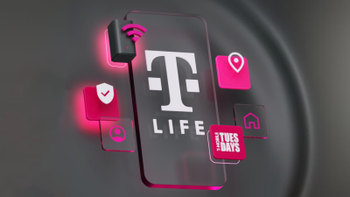








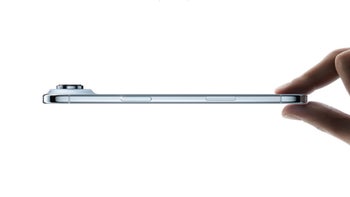

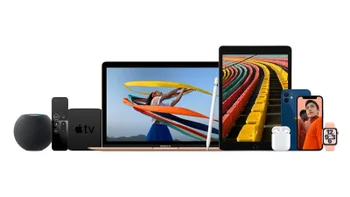
Things that are NOT allowed:
To help keep our community safe and free from spam, we apply temporary limits to newly created accounts: